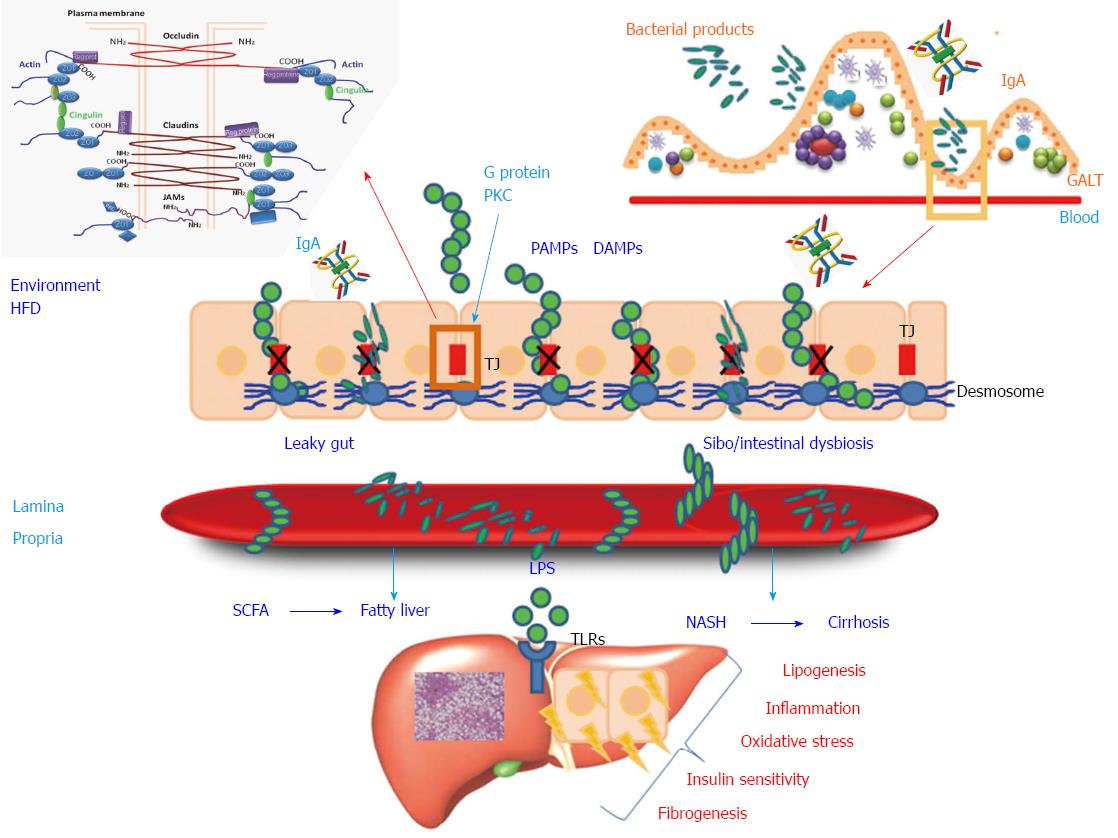Copyright
©2014 Baishideng Publishing Group Inc.
World J Gastroenterol. Nov 14, 2014; 20(42): 15518-15531
Published online Nov 14, 2014. doi: 10.3748/wjg.v20.i42.15518
Published online Nov 14, 2014. doi: 10.3748/wjg.v20.i42.15518
Figure 1 Intestinal barrier and liver.
The intestinal microbiota plays an important role in the development of gut-associated lymphoid tissue (GALT), IgA secretion, and the production of antimicrobial peptides. Environmental factors (injury, infection, or high fat diet) may induce small intestinal bacterial overgrowth (SIBO)/intestinal dysbiosis and increased intestinal permeability that promote the translocation of bacteria and bacterial products, pathogen-associated molecular patterns (PAMPs), and damage-associated molecular patterns (DAMPs). Malfunction of tight junctions (TJ), composed of occludin, claudin, and tricellulin proteins, and under the influence of proteins involved in the cascade of the signal-transduction pathways (G protein and protein kinase C), probably play a critical role in gut “leakiness”. Activation of toll-like receptors (TLRs) induces hepatic inflammation, lipogenesis, fibrogenesis, oxidative stress, and insulin sensitivity. In particular, activation of TLRs on stellate cells determines hepatic fibrosis and activation of TRLs on Kupffer cells promotes hepatic inflammation. In some dysbiosis conditions an high proportion of ethanol producing bacteria (E. Coli) may lead to high levels of endogenous alcohol, whose effects further reflect on intestinal permeability and hepatic damage. HFD: High fat diet; LPS: Lipopolysaccharide; PKC: Protein kinase C; SCFA: Short chain fatty acids.
- Citation: Paolella G, Mandato C, Pierri L, Poeta M, Di Stasi M, Vajro P. Gut-liver axis and probiotics: Their role in non-alcoholic fatty liver disease. World J Gastroenterol 2014; 20(42): 15518-15531
- URL: https://www.wjgnet.com/1007-9327/full/v20/i42/15518.htm
- DOI: https://dx.doi.org/10.3748/wjg.v20.i42.15518









